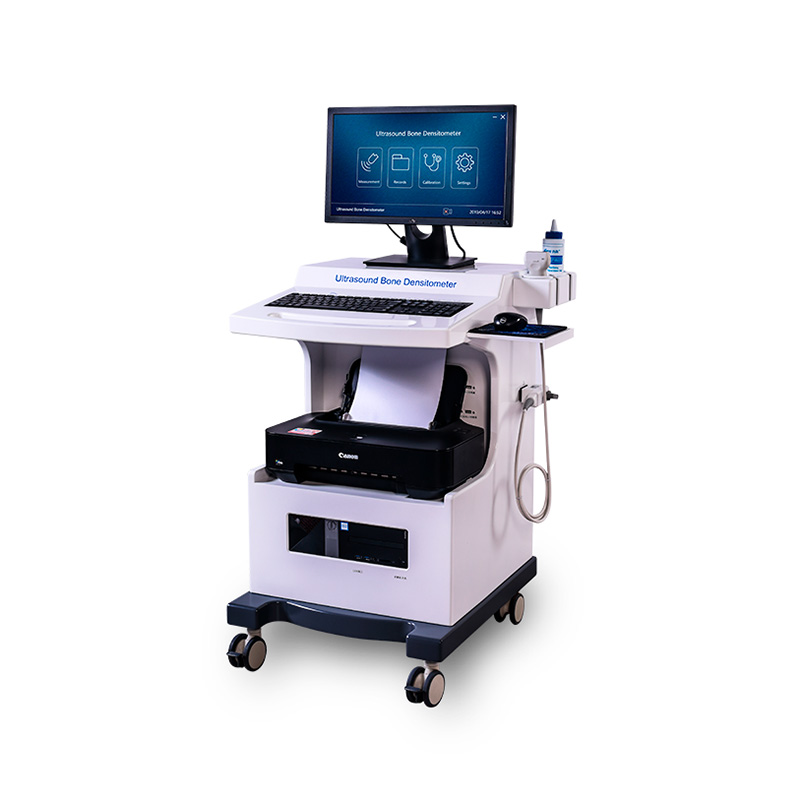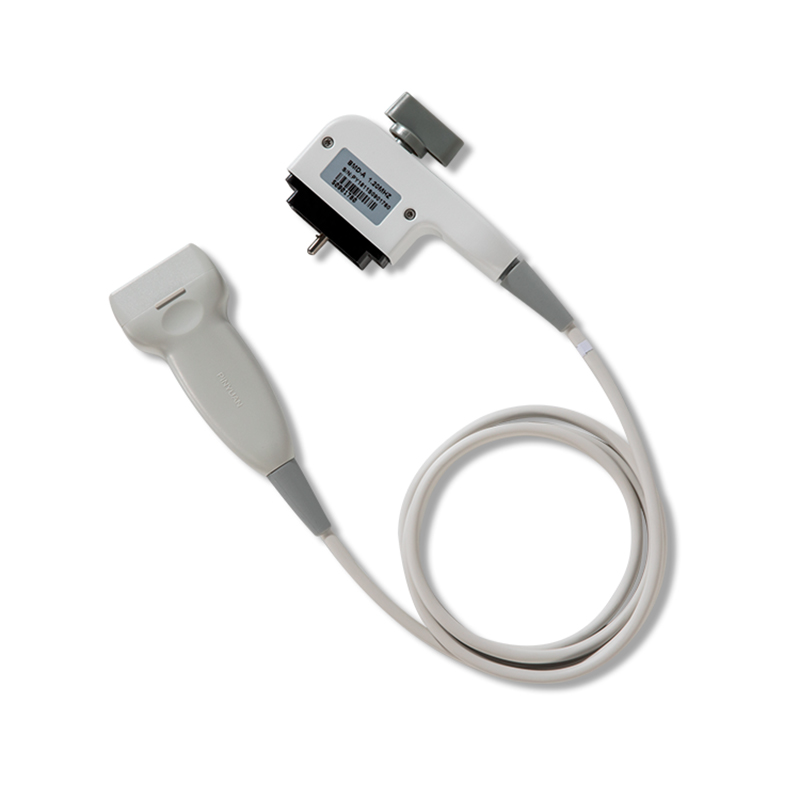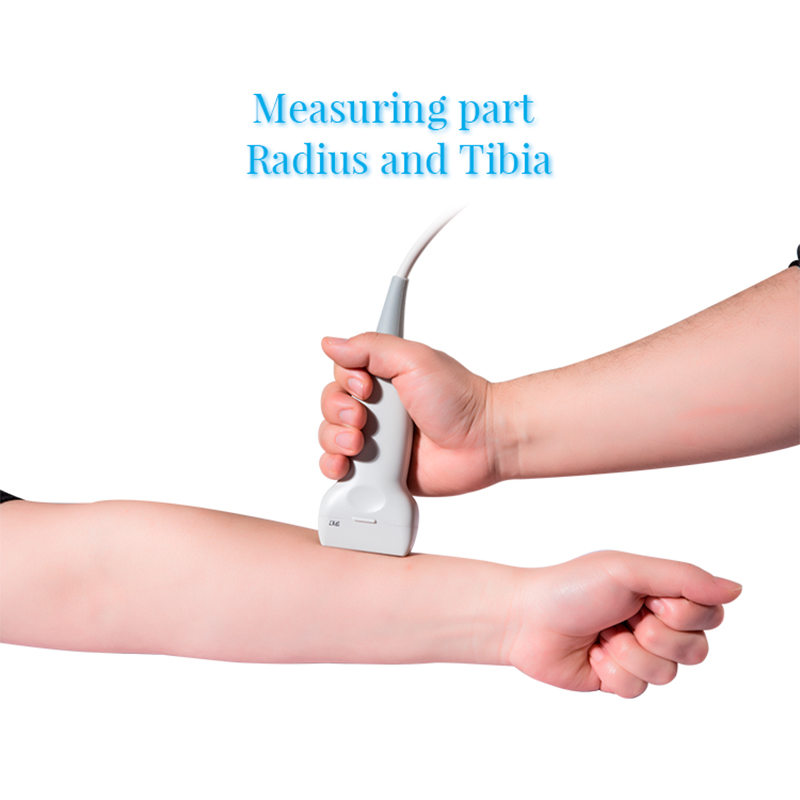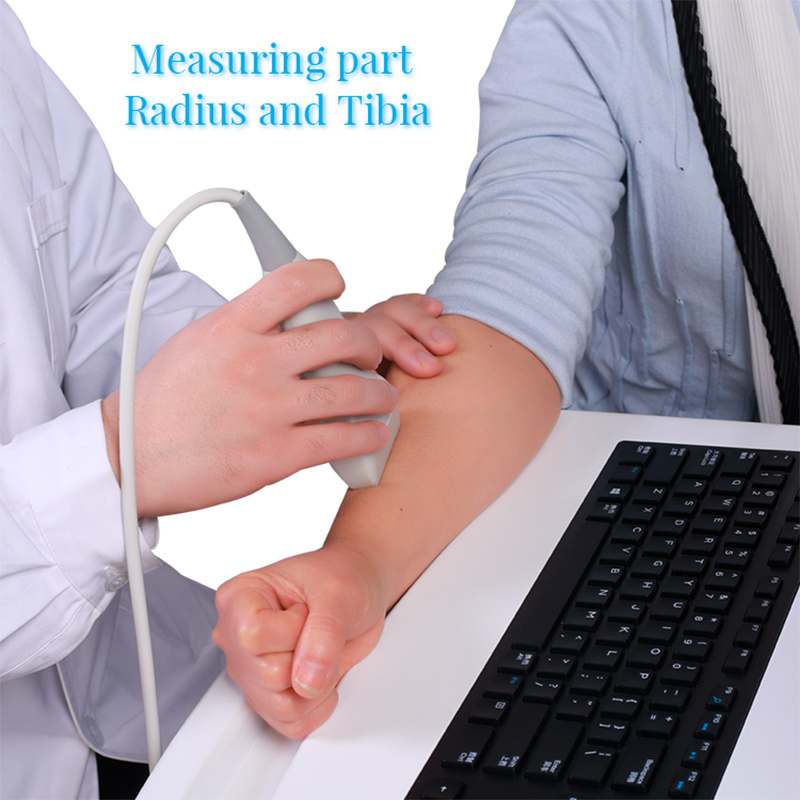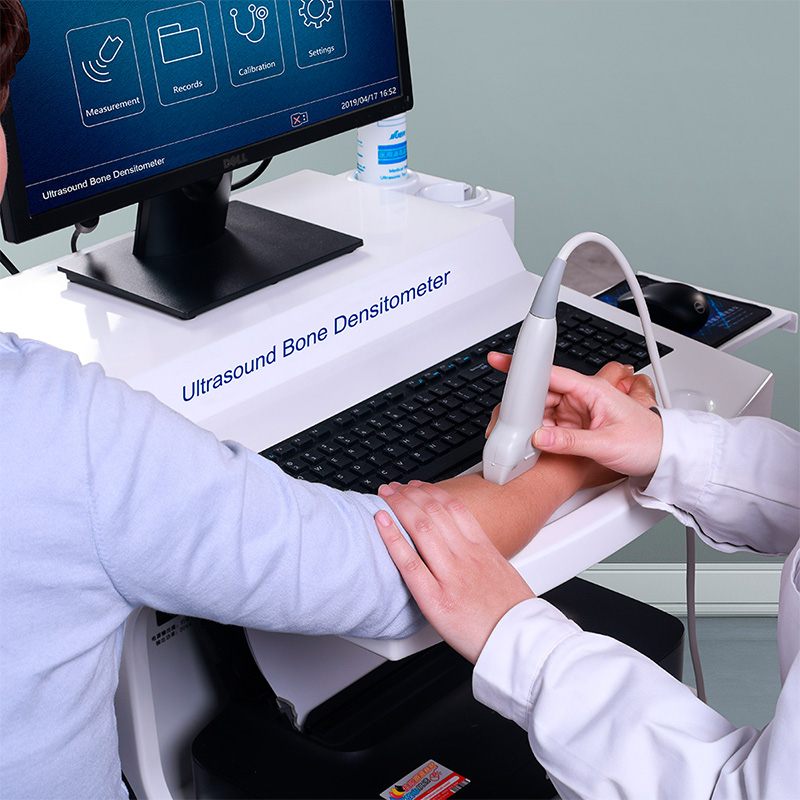Trolley Ultrasound Bone Densitometry BMD-A5
Main Function For The Bone Densitometer
The Ultrasound bone densitometer offers you osteoporosis testing . ultrasound systems assess a patient’s fracture risk within minutes.
The machine use the ultrasound to measure the Radius and Tibia bone density, the measurement process is no wound, especially suitable for pregnant women, children and other special populations.
It can test people from 0-120 years old.
The machine suitable for all kinds of medical and physical examination institutions, it can provide detailed measurement date for the elderly osteoporosis and the development of children bone density.
A bone mineral density test determines how rich your bones are in minerals such as calcium and phosphorus. The higher the mineral content, the denser and stronger your bones are and the less likely they are to break easily.
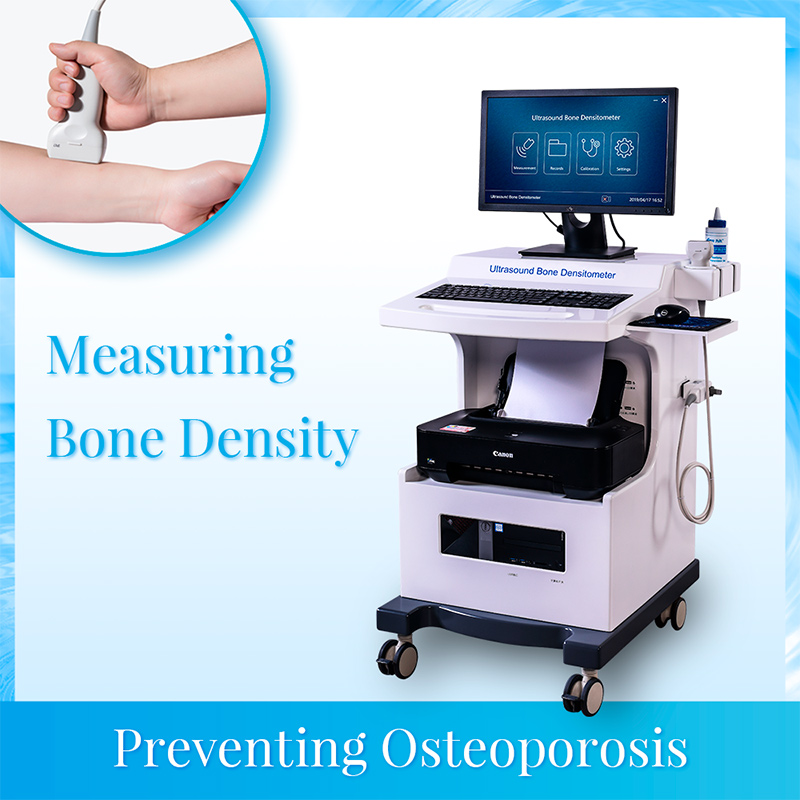

Application
Our Ultrasonic Bone Densitometer have extensive application: it used for Maternal and Child Health Centers, Geriatric Hospital, Sanatorium, Rehabilitation Hospital, Bone Injury Hospital, Physical Examination Center, Health Center, Community Hospital, Pharmaceutical factory, Pharmacy and Health Care Products
The Department of the General Hospital, Such as Pediatric Department, Gynecology and Obstetrics Department, Orthopedics Department, Geriatrics Department, Physical Examination, Department, Rehabilitation Department
Technical Features
1.Measurement parts: radius and Tibia
2. Measurement mode: double emission and double receiving
3.Measurement parameters: Speed of sound (SOS)
4.Analysis Data: T- Score, Z-Score, Age percent[%], Adult percent[%], BQI (Bone quality Index ), PAB[Year] (physiological age of bone), EOA[Year] (Expected Osteoporosis age), RRF(Relative Fracture Risk).
5.Measurement Accuracy : ≤0.15%
6.Measurement Reproducibility: ≤0.15%
7.Measurement time: Three-cycles adult measurement 8.Probe frequency : 1.20MHz
9.Date analysis : it adopt a special intelligent real –time data analysis system, it selects the adult or child databases according to the age automatically .
10. Temperature control: Perspex sample with temperature instructions
Why Is A Bone Mineral Density Test Done?
Bone mineral density testing is done to find out if you have osteoporosis or may be at risk of developing it. Osteoporosis is a condition in which the bones become less dense and their structure deteriorates, making them fragile and prone to fracture (break). Osteoporosis is common, especially in older Australians. It has no symptoms and is often not detected until a fracture occurs, which can be devastating for older people in terms of their general health, pain, independence and ability to get around.
Bone mineral density testing can also detect osteopenia, an intermediate stage of bone loss between normal bone density and osteoporosis.
Your doctor may also suggest bone mineral density testing to monitor how your bones are responding to treatment if you have already been diagnosed with osteoporosis.



Why Is A Bone Mineral Density Test Done?
Bone mineral density testing is done to find out if you have osteoporosis or may be at risk of developing it. Osteoporosis is a condition in which the bones become less dense and their structure deteriorates, making them fragile and prone to fracture (break). Osteoporosis is common, especially in older Australians. It has no symptoms and is often not detected until a fracture occurs, which can be devastating for older people in terms of their general health, pain, independence and ability to get around.
Bone mineral density testing can also detect osteopenia, an intermediate stage of bone loss between normal bone density and osteoporosis.
Your doctor may also suggest bone mineral density testing to monitor how your bones are responding to treatment if you have already been diagnosed with osteoporosis.

Bone Density Testing Results Will Be In The Form Of Two Scores
T score: This compares your bone density with a healthy, young adult of your gender. The score indicates if your bone density is normal, below normal, or at the levels that indicate osteoporosis.
Here’s what the T score means:
● -1 and above: Your bone density is normal
● -1 to -2.5: Your bone density is low, and it may lead to osteoporosis
● -2.5 and above: You have osteoporosis
Z score: This allows you to compare how much bone mass you have compared with other people of your age, gender, and size.
A Z score below -2.0 means that you have less bone mass than someone your age and that it could be caused by something other than aging.
Operational Principle

Popular Science Knowledge
 Bone Densitometry is to measure the bone density or bone strength of the People's radius and tibia. It is for Preventing osteoporosis. Bone Mass Starts to lose irreversibly from 35 years old. A bone mineral density test, sometimes just called a bone density test, detects whether you have Osteopenia(Bone Loss) osteoporosis.
Bone Densitometry is to measure the bone density or bone strength of the People's radius and tibia. It is for Preventing osteoporosis. Bone Mass Starts to lose irreversibly from 35 years old. A bone mineral density test, sometimes just called a bone density test, detects whether you have Osteopenia(Bone Loss) osteoporosis.
There are several types of bone mineral density tests. Ultrasound Bone Densitometer , Dual Energy X Ray absorptiometry Bone Densitometer ( DEXA or DXA ), Testing usually focuses on the bones most likely to break due to osteoporosis — the lower (lumbar) spine and hip (femur), the radius and Tibia .Sometimes a spinal X-ray is performed if a vertebral fracture is suspected.
Who should have a bone mineral density test?
Your doctor may suggest you have a bone mineral density test if you have had a fracture after a trivial injury or if you are suspected to have a vertebral (spinal) fracture . This type of fracture doesn’t always cause pain but may reduce your height or cause deformity of your spine (e.g. ‘dowager’s hump’).
In addition, the Royal Australian College of General Practitioners advises that you discuss with your doctor your risk of osteoporosis and whether you should have your bone mineral density investigated if you have (or have had) a major risk factor for osteoporosis, including:
● corticosteroid treatment (by mouth) for more than 3 months or Cushing syndrome;
● absence of menstrual periods for over 6 months before the age of 45 (including premature menopause, but not including pregnancy);
● testosterone deficiency (if you are male);
● long-term liver or kidney disease or rheumatoid arthritis;
● overactive thyroid or parathyroid;
● a condition that stops you absorbing the nutrients from food (such as coeliac disease);
● multiple myeloma; or
● age over 70 years.
The College also advises that women over the age of 50 and men over the age of 60 should discuss their risk of osteoporosis with their doctor if they have other risk factors for low bone density or for fracture such as:
● a family history of fracture after a trivial injury;
● low body weight (body mass index [BMI] less than 19 kg/m²);
● a history of smoking or high alcohol intake (more than 2-4 standard drinks per day for men, less for women);
● inadequate calcium (less than 500-850 mg/day) or vitamin D (e.g. limited exposure to sun);
● recurrent falls; or
● physical inactivity over a long period.
Contact Us
Xuzhou Pinyuan Electronic Technology Co., Ltd.
No.1 Building, Mingyang Square, Xuzhou Economic and Technological Development Zone, Jiangsu Province


